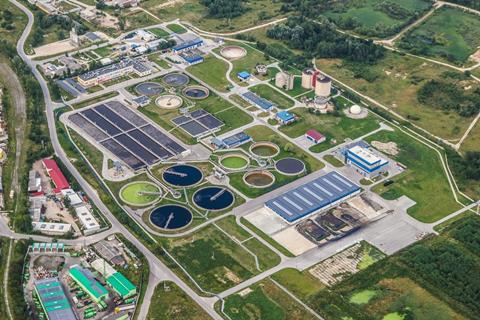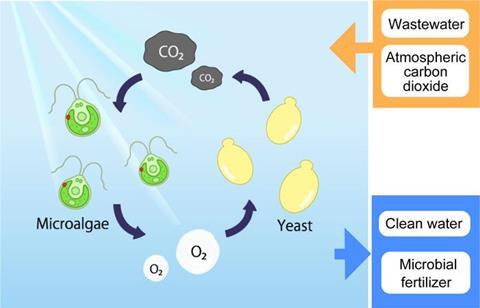Bakeries and wineries can’t do without yeast, but they have no need for green algae. Wastewater treatment facilities, however, might just want to have these microorganisms team up. Osaka Metropolitan University researchers have discovered that these simple organisms form the best combination in terms of boosting wastewater treatment efficiency.

READ MORE: Scientists boost denitrification of wastewater with biochar-based substrate
READ MORE: Technique boosts biofilm growth for efficient wastewater treatment
The active sludge method of wastewater treatment requires electricity to ensure the flow of oxygen that feeds bacteria and other organisms that process the water. Adding microalgae to conduct photosynthesis, which produces oxygen, improves energy-efficiency, but low carbon dioxide levels hinder their growth. Enter the yeast Saccharomyces cerevisiae, which produces carbon dioxide.
Useful compounds produced at the same time as wastewater treament
Associate Professor Ryosuke Yamada of the Graduate School of Engineering led the group in investigating which combination of these types of microorganisms would provide the highest efficiency in wastewater treatment. Reported for the first time to the researchers’ knowledge, the group found that the combination of the green algae Chlamydomonas reinhardtii and yeast had the best efficiency. Notably, the combination enhanced the green algae’s ability to absorb ammonium and phosphate ions.

“The green algae and yeast are highly safe for humans, especially considering that treated wastewater is discharged into the environment,” Professor Yamada explained. “These microorganisms can also accumulate useful compounds such as polysaccharides, fats, and oils in their cells, and be used as microbial fertilizers, so it is possible to expect useful compounds to be produced at the same time as the wastewater is being treated.”
The findings were published in Applied Microbiology and Biotechnology.




No comments yet